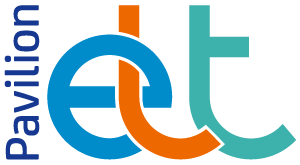In this series, Nicky Hockly explains aspects of technology which some people may be embarrassed to confess that they don’t really understand. In this article, she applies herself to apps.
1. I’ve heard the phrase ‘there’s an app for that’, but what is an app?
An app (or application, to give it its full name) is a software program. Although apps can be downloaded to, or accessed from, any computer, the word has become synonymous with the programs on mobile devices, particularly the iPhone or iPad. This is because the catchy slogan ‘There’s an app for that’ first appeared in a marketing campaign for Apple’s iPhone. Apple were granted trademark rights over this phrase in 2010, but that hasn’t stopped lots of spoof ‘There’s an app for that’ videos appearing on the internet. My favourite is at http://bit.ly/B4vrD.
You can buy apps for an iPhone or iPad at Apple’s App Store and apps for an Android mobile device at Google Marketplace. In this article, we will look at apps that are specifically made for mobile/handheld devices.
2. So you download apps to your mobile phone?
Well, to a smartphone and/or to other mobile devices such as a tablet computer. We need to distinguish between ‘web apps’ and ‘native apps’. ‘Web apps’ are apps (software programs, remember) that live on the internet. This means you need to be connected to the internet via your mobile device to use them. If you are not connected to the web, your web app won’t work.
‘Native apps’, on the other hand, live on your device, so you don’t need to be connected to the internet to use one – all the data that the app needs is stored on your handheld device. So you connect to the internet once, to download the app, but after that you don’t need a connection in order to use it.
3. I’m a classroom English teacher. Why should I care about apps?
Mobile devices are becoming increasingly ubiquitous, so the chances are that your students will have at least a mobile phone. In developed countries, these phones are increasingly likely to be internet-enabled smartphones, and many English language apps now available are designed for these. However, there are also English language mobile products available for lower-end mobile phones – one example is the BBC project ‘Janala’, which makes very affordable language lessons available via basic mobile phones to learners in Bangladesh (www.bbcjanala.com).
Of course, even in developed countries we are not at the point where every learner in every classroom has a smartphone. Nevertheless, some of your students may have them – and it is part of our job as English teachers to know what resources are out there for our students, and to be able to point them towards these.
4. So what apps are good for learners of English?
You’ll find smartphone apps for all sorts of things: grammar, vocabulary practice, pronunciation, listening, dictionaries … There are also ‘courseware’ apps that provide mini-lessons, complete with text, audio and even video. Most ELT apps tend to be repackaged versions of selfaccess materials already available on the web or in self-study print workbooks. There are notable exceptions, with apps designed to encourage interaction via social media, eg Facebook, Twitter, etc. The apps designed by the British Council are, in my opinion, currently some of the best in our field (see http://bit.ly/bS6f7y). I don’t have space here to review specific apps, but you’ll find a fairly comprehensive review at http://bit.ly/cd57IC.
There are also plenty of apps around which are not specifically designed for ELT, but which can make wonderful tools for learners to produce language with. Take a look at a video by Gavin Dudeney, which demonstrates how you can make effective use of some good non-ELT apps: http://bit.ly/haernd.
5. How can I start using apps with my learners?
Here are some simple steps you can take:
- Find out what’s available, for example by reading the apps review I recommend above. You don’t need a smartphone yourself to know what’s out there.
- Find out what sort of mobile devices your students already have and what they use them for. If some of your students have smartphones, do they use any English language learning apps? You may find, for example, that some of them already have dictionaries on their phones.
- Provide your students with a list of what you consider to be useful (ELT and non-ELT) apps. You could start simply by recommending a few podcasts, for example – these can be downloaded to smartphones and mobile devices, but they can also be accessed from regular computers. Take a look at the lesson plan by Ana d’Almeida for introducing learners to the British Council Flatmates podcast series at http://bit.ly/go0mhd.
- Encourage your students to use apps regularly over a period of time (eg two weeks). Then get feedback in class time on how they are finding the experience. You may find that this encourages others in the class to try using apps.
In other words, start out small, and get regular feedback on your students’ outof- class use of apps. If they feel that the efforts they are making to practise their English are recognised and appreciated – and that they are learning something – they are more likely to continue.
Nicky Hockly is Director of Pedagogy of The Consultants-E, an online teacher training and development consultancy. She is co-author of Teaching Online (DELTA Publishing), which was nominated for a 2011 British Council ELTon award. She is currently co-authoring a book on digital literacies and maintains a blog at www.emoderationskills.com.
This article first appeared in English Teaching professional, Issue 77, November 2011



